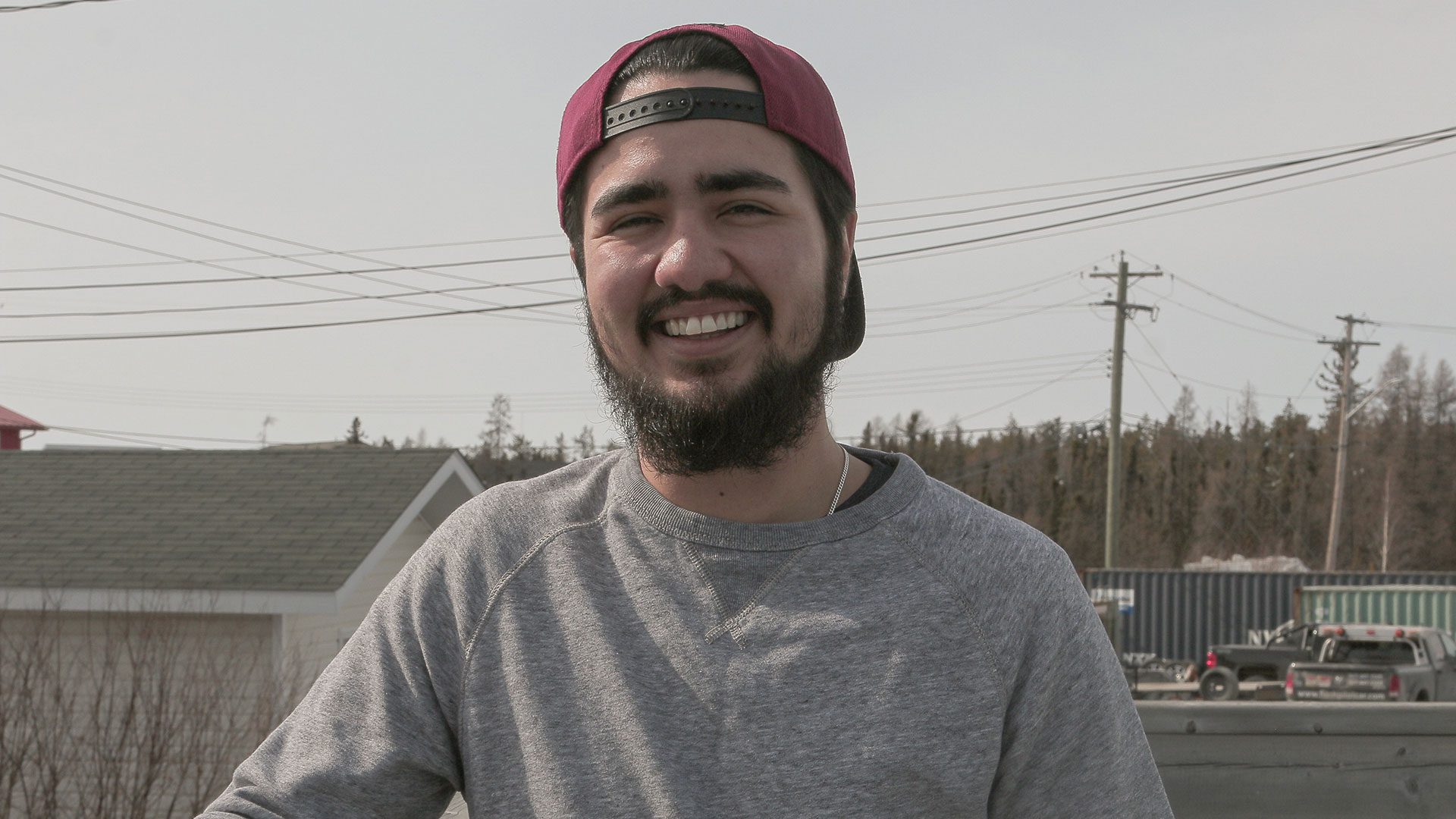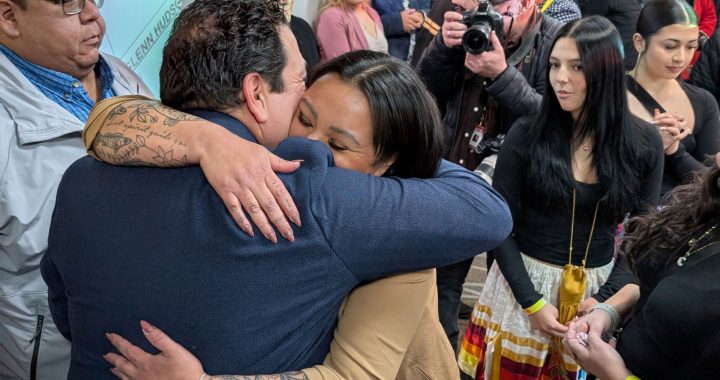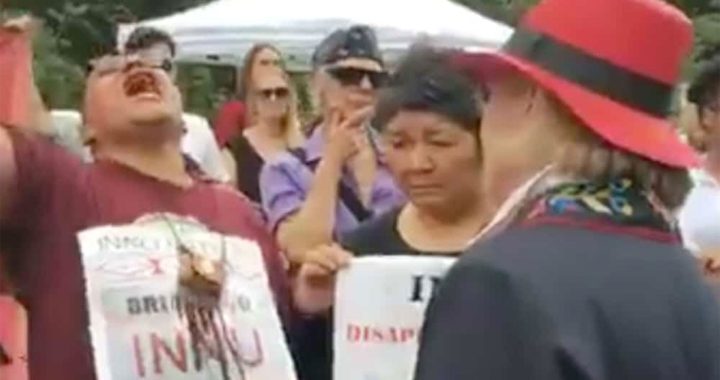For the first time ever, transgender, and non-binary Canadians have a space in Statistics Canada census data.
New data released from 2021’s collection reports that “of the nearly 30.5 million people in Canada aged 15 and older living in a private household in May 2021, 100,815 were transgender or non-binary,” the report says.
Theo Grandjambe, a transgender dene man from Yellowknife said it’s a step towards inclusion.
It’s a historical first for the national statistics agency, which previously asked only about sex of a person.
The 2021 census differentiated between “sex at birth” and “gender.”
Grandjambe objected to census takers still having to mark “other,” when ticking off a gender.
“I could identify and check the male box because that’s what I look like and feel like, but I like to be honest about who I am. So, checking the other, it kind of brings you back to ‘where do I fit into this whole societal picture,’” he said.
In recent years the liberal government has pushed for more inclusivity of LGBTQ2S+ communities.
In 2017, the federal government implemented Bill C-16, which added gender identity and expression as prohibited grounds of discrimination under the Canadian Human Rights Act.
Read More:
Government announces new legislation to protect transgendered Canadians
That same year, the Northwest Territories and Yukon announced a change that allowed individuals to change the sex on their birth certificate to a gender neutral X, without gender reassignment surgery.
Cree transgender advocate Gabrielle Landrie, from the small community of Hay River, N.W.T. fought for the birth-certificate change.
“A person who is transgender goes through a lot of discrimination. People will look and then turn away. In the smaller communities it’s three times harder,” Landrie said.
The 2021 Census data showed just over half of nonbinary people and just under half of transgender people live in one of the six largest urban centers in Canada.
Landrie has fought back against trans discrimination in remote communities.
In 2011, while studying at Aurora College in Fort Smith, Michael Miltenberger, the Northwest Territories’ finance minister asked her to leave the college.
Landrie filed a complaint with the Northwest Territories human rights commission alleging that she was being asked to leave the college because of a visit from former governor general David Johnston and the request was to avoid any contact with her.
But according to the 2013 human rights decision, “The Panel found that while the complainant was denied access to school facilities, the denial was not related to her gender identity and her complaint was dismissed.”
“Because of that incident, and after the trial (human rights hearing), I never did go back to school. The government needs to recognize people who are transgender are just like everyone else,” she said.
Landrie, has lived with spinal stenosis over the last few years a condition which has render her differently abled in a wheelchair.
She hoped the census data will inject more resources targeted at transgender unemployment.
“For 33 years I drove truck and then I ended up in a wheelchair. People see the wheelchair and think you can’t do anything and being transgender in a small community makes it even harder,” Landrie said.
Storm Lynn, Two-Spirit dene and a past N.WT. pride president agreed the 2021 census provides some visibility of gender diversity in Canada.
“People who create these kinds of surveys could be super well-meaning in the process with good intentions, but I’m worried about the wording and if it comes across as dehumanizing, or if it’s more invasive than it needs to be,” Storm Lynn said.
The advocate also noted that anytime LGBTQ2S must fill out a survey involving gender labels there’s a risk.
“I’m a little bit nervous about how anonymous. People might not be out for lack of better words, but self-disclosing on this can open up safety concerns, if somebody is not out for safety reasons,” Storm Lynn said.
Storm Lynn also stressed to APTN News the importance of financial action taken because of new census data be put under the direction of LGBTQ2S+ organizations.
“I am hoping that the government can reach out to these already existing organizations and say ‘how can we help you,’ versus ‘this is how we’re going to help you.’” Storm Lynn said. The work is already getting done and the issues are already identified.”
Storm Lynn suggested the territorial government subsidize the same diversity and inclusion workshops offered to government employees.
These courses are facilitated by local LGBTQ2S+ organizations who work to improve educate and improve social, institutional, and cultural conditions for LGBTQ2S+ communities.
For Storm Lynn, resources must also go to Indigiqueer groups, especially youth who are actively decolonizing colonial teachings which uphold a gender binary and reclaim gender identities pre-contact.
“A lot of that thinking was indoctrinated in our Elders, through the residential school system and the day school systems,” Storm Lynn said. “Even though a lot of the knowledge is lost to us, language that was used in ceremonies, our younger Generations are recreating language.”
Storm Lynn has worked with their elders to understand words or descriptions of gender-diverse people and various sexual orientations.

Grandjambe, an intergenerational residential school survivor said as his family reclaims cultural practices, he too questions whether he identifies with transgender or Two-Spirit.
“Throughout my transition, my femininity has still very much been with me, but I also have the masculine traits so I’m kind of find that I’m in-between,” Grandjambe said. “I think with my research and really sitting with myself, I am more leaning towards Two-Spirit because it helps me connect with my culture more and go back in the history where Two-Spirit people have always been.”
Grandjambe, Landrie and Storm Lynn all cited a lack of equitable healthcare a major challenge and hope to see trans healthcare coverage.
“These surgeries and things that are related to the survival of trans people, because studies show that being able to come medically transition, can be lifesaving,” Storm Lynn said. “But if you can’t afford it, if you’re not able to move up in your career, or if you are stuck, working entry level jobs you’re living paycheck-to-paycheck.”
Statistics Canada also provided insight to a generational divide.
Younger populations were three to seven times more likely to identify as transgender or nonbinary compared to older populations.
When Grandjambe started his transition he had to leave his home and travel to Edmonton, meeting with numerous counsellors before even speaking with a doctor at 18.
From his own experience, he said transgender children and youth could benefit greatly from a northern gender clinic.
“I feel there are children here between the ages of 8-13 when they are truly coming into their own skin and being able to have a gender clinic where they can go and read pamphlets or talk to other children and young adults about ‘how are you feeling, who are you and what’s your gender,’ everyone will get validated.”










